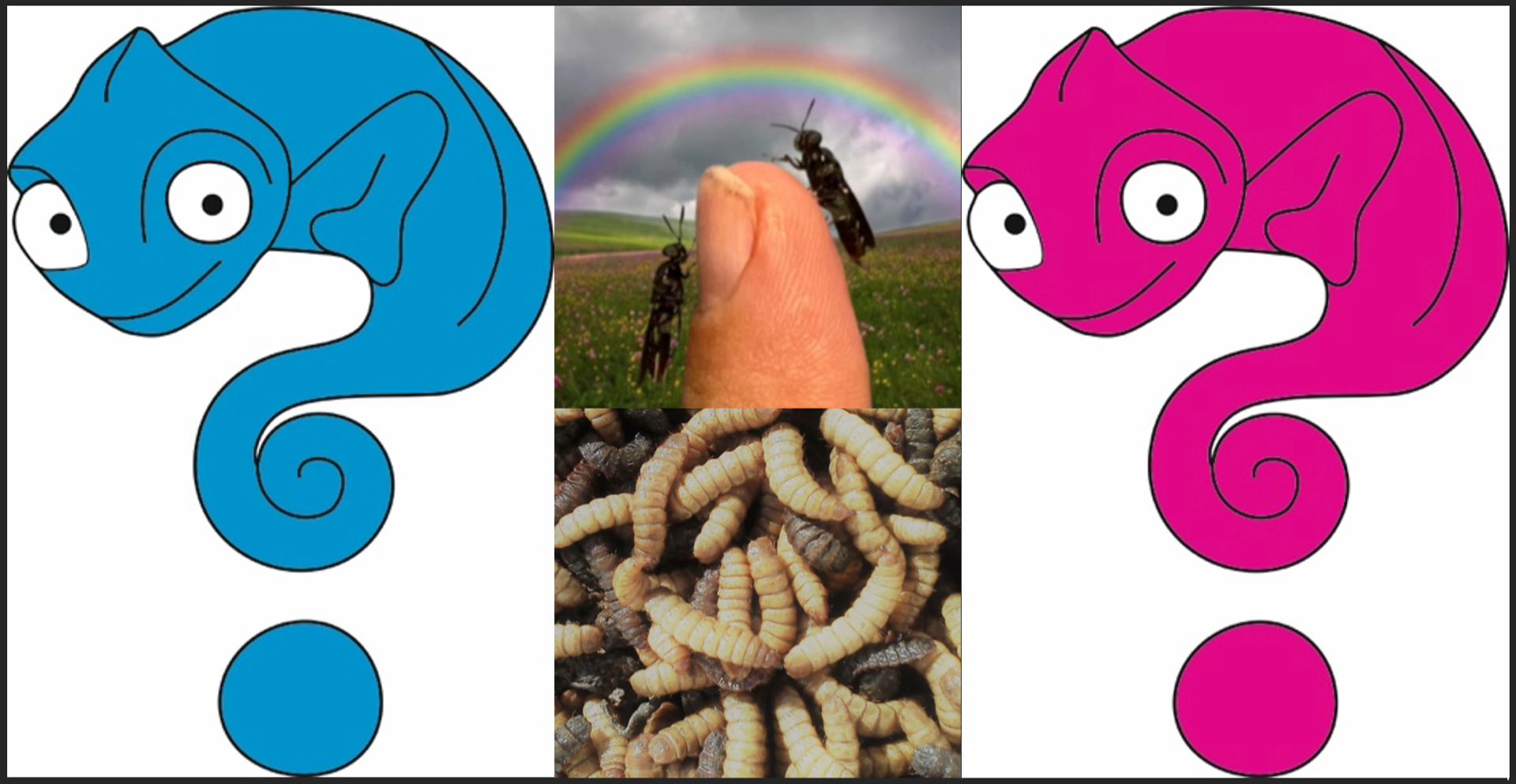Myth 8: "BSFL Is a Panacea"

The Bitter Truth with a Happy End
Black soldier fly larvae (BSFL) are not miracle feeders. They are powerful, problematic, and misunderstood. Used wisely, they are a staple. Used blindly, they are a disaster.
What Is BSF and BSFL?
The BSF, Black Soldier Fly (Hermetia illucens), is a tropical Dipteran native to the Americas, now globally cultivated. Its larvae—BSFL—are voracious decomposers, consuming organic waste with unmatched efficiency. In reptile husbandry, BSFL are marketed as "superfeeders," especially for chameleons, due to their high calcium content and ease of farming. But the truth is layered.
Nutritive value of BSFL and comparison to other feeders
Black Soldier Fly Larvae (BSFL) are marketed as calcium-rich saviors. And yes, their calcium-to-phosphorus ratio is high. But the bitter truth is: that calcium is locked inside a tough, mineralized matrix. It's not fully bioavailable. Experiments on leopard geckos show that calcium uptake from BSFL is no better than from standard feeders. So the myth that BSFL replace dusting? Dangerous nonsense.
Their fat content is deceptively high—up to 35% in pre-pupal stages. This fat is biologically designed to fuel metamorphosis and egg production. In chameleons, it fuels obesity, hepatic lipidosis, and metabolic stress. They are not lean snacks. They are energy bombs.
Their protein is moderate—lower than crickets, roaches, or silkworms.
Now compare:
Crickets are lean, agile, and easy to dust. Their protein is high, fat moderate, but calcium low. They require supplementation but are behaviorally enriching and anatomically safe.
Roaches are protein-rich and fatty. Their exoskeleton is thick, and they often hide in cage strata. They're good for gu-tloading but risky for tongue injuries if oversized. They discredit themselves by the almost incontrollable content of deadly dangerous uric acid and phosphorus. Omit them.
Silkworms are soft-bodied, hydrating, and high in protein. Their fat is low, and they're ideal for recovery. But they're sensitive to heat and perish easily. Depending on diet, they are mildly toxic.
Waxworms are pure fat. They are treats, not staples. Feeding them regularly is a metabolic disaster.
BSFL sit between these extremes. They are tough, fatty, and hard to digest. Their calcium is present—but not accessible. Their body is resistant to powders. And when fed in bulk, they desensitize the chameleon's chewing reflex, leading to undigested larvae, internal trauma, and fatal outcomes.
The Danger of BSFL
They are tough. Hard to kill. Hard to chew. Some remain alive and can be pooped out intact. In ill animals, they've been documented to bite themselves free from the stomach through the body wall. The problem escalates when chameleons eat many of them: the first is chewed thoroughly, the rest weakly. Disaster follows. They can come out with faeces alive and undigested or they bite themselves free in weak chameleons directly through their body wall.
They are too fatty. Up to 35% of their bodies before metamorphosis goes to fat—fuel for transformation and egg production. This overload leads to hepatic lipidosis and obesity.
They are hard to dust. Vitamin and mineral powders don't stick well to their waxy cuticle, resistant to powder adhesion. Dusting fails. Supplementation is compromised.
They are easy to gutload—but dangerously so. They eat almost everything, including plastic. That's not a joke. Gut-load control is essential. On the other side, in BSFL, the proverb works: you are what you eat. So, they became energetic bomb or light snack based on your choice of their food.
The Great Value of BSF Adults
The adult Black Soldier Fly is a phenomenal feeder. It imitates the food chameleons evolved to hunt: low energy, high micronutrient, and behaviorally stimulating.
They activate the hunting reflex. Chameleons become beasts when they see a fly.
They are small—perfect for babies, safe for adults.
They don't challenge the tongue. No risk of tearing or entanglement.
They stay visible: they do not hide, attracted to light, they rise to the upper cage layers.
They are easy to dose. Development is temperature-dependent. Refrigerate pupae, hatch on demand.
No plastic feeder cups needed. No microplastics, no toxic fumes from UV-exposed containers.
Final Recommendation
BSFL are not a panacea. They are a tool—powerful, risky, and valuable when used with forensic caution. Gutload them wisely. Feed them sparingly.
Celebrate the adult BSF. They are the best staple feeder ever devised—natural, safe, and behaviorally enriching.
You decide: energetic bomb or light snack. But never forget: nature is precise. Husbandry must be forensic.